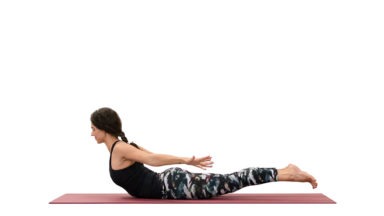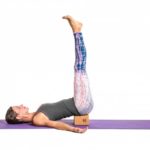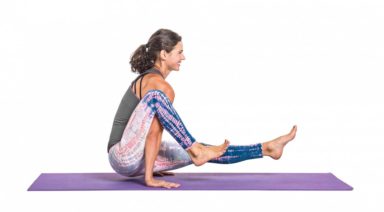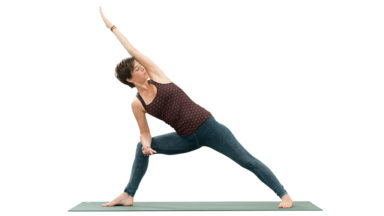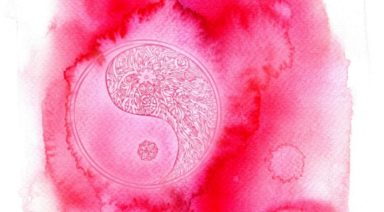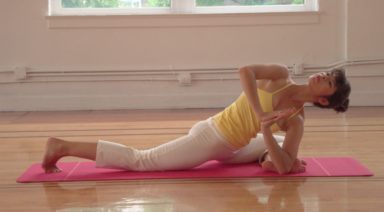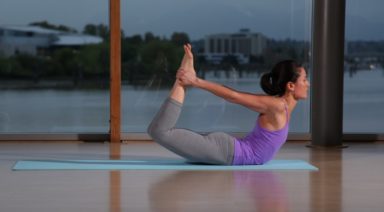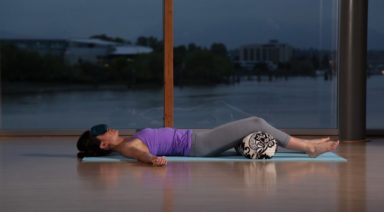Spring Cleansing with Kriya, Asana and Pranayama

Spring has arrived once again and joyfully we begin to see budding flora & blooming fauna as they come out of winter’s hibernation. In Traditional Chinese Medicine, the liver is related to this fresh and vibrant season in which it is strongly influenced by. It’s a great time to assist the body in its natural cleansing process by toning and strengthening the liver organ so it can efficiently process and remove toxins from the body. This in turn will help to strengthen other body systems such as the immune, digestive & endocrine systems which will help to increase energy levels, promote radiant & vibrant skin, maintain healthy weight for your body type as well as promote a deep sense of peace & well being.
There are many ways in which we can support the body to reach and maintain optimal health & wellness, exercise, nutrition, relaxation and a healthy positive attitude…to name a few! Here are a few tips on using kriya, yoga asana and pranayama for toning, cleansing and strengthening the entire body and mind:
3-Part Breath – Dirga Pranayama
A deeply cleansing & grounding breath, helps to balance emotions, move stagnancy out of lungs, increases lung capacity, purifies toxins from the blood.
*Incorporate this breath several times throughout the day to focus attention to the present moment.*
Kapalabhati Breath – Breath of Fire
Cleanses the lungs & entire respiratory system, increases lung capacity, increases oxygen throughout entire body, massages digestive system improving overall function, purifies blood, brings balance into sympathetic and para-sympathetic parts of the nervous system, stimulates normal functioning of the endocrine system and tones abdominal muscles.
*Beneficial for those who experience seasonal allergies.*
Twists
Twisting poses release tension in the body, improve digestion, help to “wring” out toxins from the spine and other internal organs, tone the spinal nerves and improve the functioning of the spinal cord, flushing & cleansing action of the kidneys & liver, brings balance into the nervous system, massages & tones abdominal organs making it helpful to eliminate constipation, brings balance into the adrenal glands & hormone production, beneficial for menstrual disorders, improves round shoulders.
*Twists energize the body and can help give a boost when feeling sluggish or tired.*
Tapping
Face, head, neck, shoulders, chest, abdomen & low back) – boosts the immune system by increasing production of T-cells, reduces stress, energizing, increases focus, promotes strength & vitality, balances left of right hemispheres of the body.
*Tapping is a great “pick-me-up to increase focus and rejuvenate the body & mind”.*
Neti Kriya
Enhancement of olfactory senses, loosens and flushes dried mucous, dust and other pollutants in nasal cavity, reduces frequency & severity of colds & sinusitis.
*Neti Kriya is a beneficial practice for those who experience symptoms from asthma, allergies, sinusitis & hay fever.*
Cat & Cow Pose
Cat and cow pose massages and stimulates internal organs for increased digestion & detoxification, opens chest cavity for increased lung capacity, helps to expel stagnant matter from the lungs.
*If you feel the urge to cough while practicing this movement, allow yourself to do so to remove excess mucous from the lungs.*
Forward Bends – Uttanasana & Paschimottanasana
Forward bends massage abdominal organs, stretch & strengthen the spine bringing balance into nervous system, regulate digestion, menstruation & body temperature, calm & soothe the mind.
*Tones organs responsible for urination, defecation, ejaculation, menstruation and child birth.*
Shoulder Stand – Salamba Sarvangasanam
Shoulder stand pose stimulates blood and lymph flow to enhance detoxification, carries new blood to liver & kidneys which assists in increased detoxification, activates pituitary and pineal glands synergizing them to balance hormone levels in the body, increases blood circulation to the brain which will promote higher levels of concentration and mental sharpness.
*Because of the many benefits to this pose it is considered the “Queen of Asanas”.*
Meditation
Meditation is a subtle yet powerful practice to assist with cleansing & purification of body & mind, increases blood flow, decreases muscle tension, enhances energy, strength & vigor, increases focus & concentration, promotes self confidence, increases communication between the two brain hemispheres, grows a stable, more balanced personality, helps keep things in perspective, helps us tune into the present moment and experience a sense of “oneness”.
*Meditation can be practiced by anyone regardless of spiritual or religious practices, age, or gender.*
HAPPY CLEANSING!
Join Gaiam TV for the Conscious Cleanse!
Join us as we go through a 14-day clean eating and yoga challenge. We’ll guide you through a journey of personal growth and transformation using clean, from-the-earth nutrition paired with detoxing yoga practices from the best yoga teachers around.
No calories to count, no supplements to buy. This is a back-to-the-basics approach to simplify all of the things you put into your body – nutrition, exercise, and thoughts.
Quadratus Lumborum and Mindful Back Health in Yoga
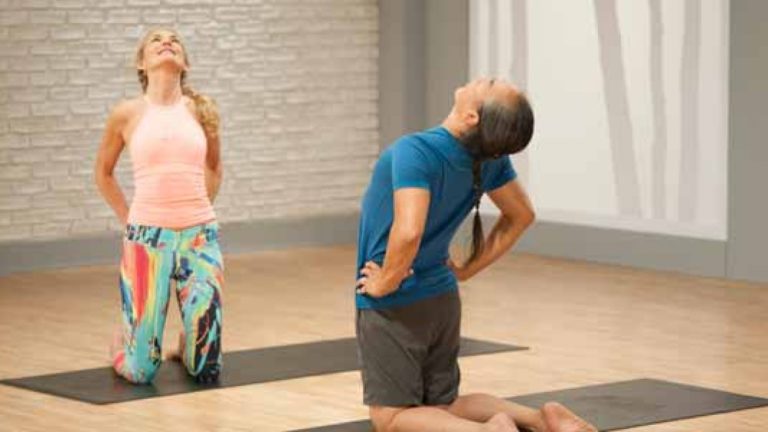
Low back pain is an increasing issue in our society dominated by poor posture, sedentary lifestyles, and chronic sitting patterns. The source of low back pain can vary, but a great deal of these muscular dysfunctions emanate from the quadratus lumborum muscles.
Most of us are quite familiar with the erector spinae muscles that travel from the hip crest/sacrum to various points up the vertebrae and ribs. These muscles function primarily as extensors of the back. Few people (including yoga teachers) are aware of the all-important quadratus lumborum muscles that are located deep toward the erector spinae.
The quadratus lumborum muscles sit on either side of the vertebrae. They originate on the iliac crest (hip bone) and insert on the transverse processes of the lumbar vertebrae and the 12th (last) rib.
When both sides contract, they extend the spine (and/or depress the ribcage from behind). When only one side contracts, the spine flexes laterally and/or elevates the ilium (hip) on that same side. In forced expiration, the quadratus lumborum will fix the 12 ribs.
When Back Pain Can Occur
Dysfunction and low back pain can settle into the quadratus lumborum under a few conditions:
- If the erector spinae are weak or inhibited (as they often are in chronic seated postures), the quadratus lumborum attempts to take up the slack and loading in back extension and spinal stabilization leading to overall muscle fatigue.
- If muscle imbalances build up across the pelvis (e.g., tight hip flexors), the lower vertebrae can shift into chronic excessive curvature (lordosis), which will shorten and weaken the quadratus lumborum and erector spinae.
- If poor posture and upper body muscle tension forms across the chest and shoulders, rounded-back posture (kyphosis) will pull the rib cage up and away from the hip crest. This places stress and drag on the quadratus lumborum and portions of the erector spinae.
- The deep gluteals (gluteus medius and gluteus minimus) are responsible for hip abduction and pelvic stabilization in walking and other gait patterns. If these deep gluteal muscles are weak and inhibited, the quadratus lumborum and tensor fascia latae have to compensate to stabilize the pelvis.
- Some physical experts have also found that tight hip adductor muscles (groin) can inhibit (through reciprocal inhibition) the gluteus medius muscles. As mentioned above, the quadratus lumborum muscle may compensate for the gluteus medius muscle’s lack of activity and pelvic stabilization.
How to Keep Your Back Healthy with Yoga
Understanding that the dysfunction residing in the quadratus lumborum is often the result of dysfunction and tension imbalances coming from other muscles, here are some initial approaches to maintaining health of the quadratus lumborum:
- Develop a strategy to maintain fluid balance in upper and lower body posture patterns to avoid chronic hip flexor tightness, back extensor tension, and loss of natural vertebral curvature and pelvic placement
- Stretch the chest, front of the shoulders, hip flexors, groin, and lower back frequently
- Strengthen back extensors and overall core stabilizers
- Strengthen and stretch deep gluteals to unload unnecessary engagement of the quadratus lumborum
- Engage in proper therapeutic treatments when discomfort and pain develop
Need help with yoga for back pain? Sign up for our Yoga Foundations Guide with Rodney Yee & Colleen Saidman Yee!
Do These Yoga Poses for Back Pain
Here are some basic, accessible stretches readily prescribed to restore and maintain flexibility in the quadratus lumborum muscles:
Child’s Pose
When aiming to stretch the quadratus lumborum muscles and other lower back musculature, I would personally recommend avoid using forward bends like Uttanasana (Standing Forward Bend), Paschimottasana (Seated Two Leg Forward Bend) and other similar poses.
Due to the nature of intervertebral disc compression in spinal flexion, these types of forward bends would be better served to actually involve engagement of the back extensors and transverse abdomen in order to extend the spine, shift the ‘flexion’ into the hips, unload the lower vertebrae and protect against disc compression.










